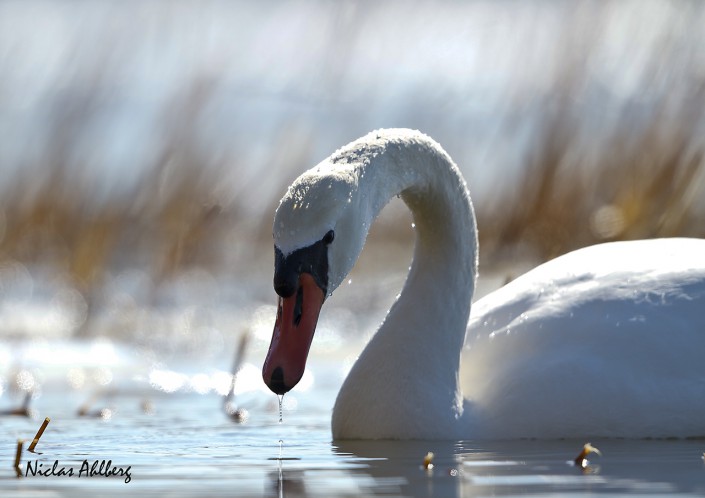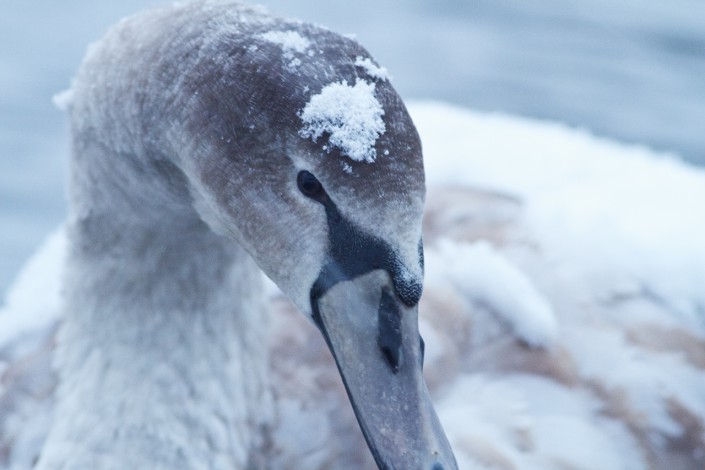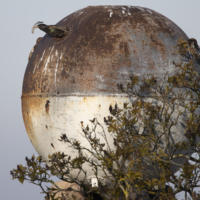This post is also available in: Swedish
Mute swan – Cygnus olor
Mute swan – Cygnus olor
Mute swan is a species of swan, and thus a member of the waterfowl family Anatidae. It is native to much of Europe and Asia, and (as a rare winter visitor) the far north of Africa. It is also an introduced species in North America, Australasia and southern Africa. The name ‘mute’ derives from it being less vocal than other swan species.
Mute swans nest on large mounds that they build with waterside vegetation in shallow water on islands in the middle or at the very edge of a lake. They are monogamous and often reuse the same nest each year, restoring or rebuilding it as needed. Male and female swans share the care of the nest, and once the cygnets are fledged it is not uncommon to see whole families looking for food. They feed on a wide range of vegetation, both submerged aquatic plants which they reach with their long necks, and by grazing on land. The food commonly includes agricultural crop plants such as oilseed rape and wheat, and feeding flocks in the winter may cause significant crop damage, often as much through trampling with their large webbed feet, as through direct consumption.
Mute swans lay an average of four eggs, and the female broods for 36 days. The cygnets do not reach the ability of flight before an age of 120 to 150 days: this limits the distribution of the species in the northern edge of its range, as the cygnets must learn to fly before the waters freeze.
It sounds like this
Recording by Jerome Fischer from xeno canto



























































































































